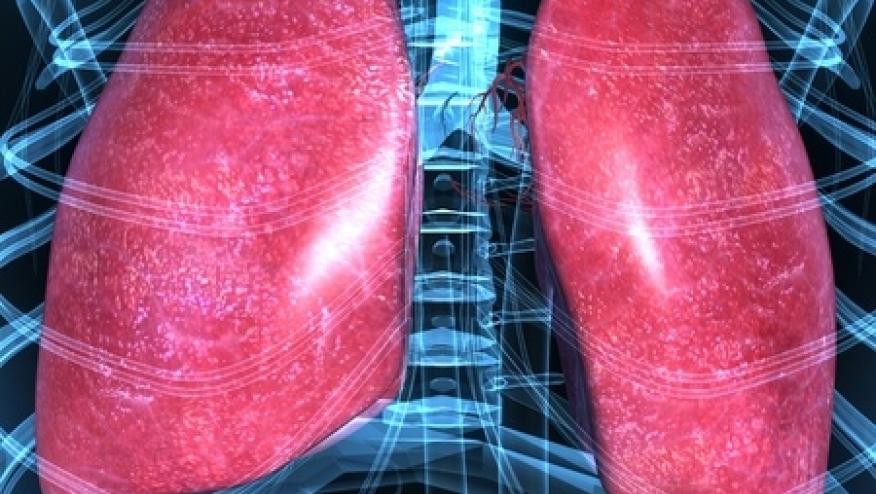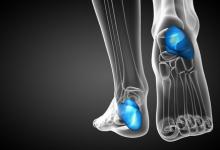Lung Disease in RA: Which Factors are Linked With Mortality? Save

Among patients with rheumatoid arthritis (RA) who had interstitial lung disease (ILD), the pattern of ILD did influence mortality, but other pulmonary factors also contributed, a meta-analysis suggested.
In 10 studies that compared the usual interstitial pneumonia (UIP) pattern of ILD with other patterns, an increased mortality risk was seen in the UIP group (RR 1.66, 95% CI 1.07-2.76) but heterogeneity was high (I2 =76%, P<0.00001), according to Namrata Singh, MD, of the University of Iowa Hospitals and Clinics in Iowa City, and colleagues.
However, physiologic parameters such as forced vital capacity (FVC) may have had a stronger influence on mortality. In one of the included studies, a lower baseline percent predicted FVC and a 10% decline from baseline were associated with a hazard ratio for death of 2.57 (95% CI 1.79-3.70), they reported in Seminars in Arthritis & Rheumatism.
Extra-articular features of RA -- especially pulmonary involvement -- contribute significantly to morbidity and mortality in the disease. In a study that included almost 120,000 women, those with seropositive RA had almost triple the mortality rate from respiratory disease compared with healthy controls.
The two most common patterns of involvement are UIP, which is characterized by honeycombing and reticular changes in the lower lobes, and nonspecific interstitial pneumonia (NSIP), typified by alveolar inflammation and ground glass shadows.
Earlier thinking held that UIP is associated with higher mortality, but a recent large study found no difference between the types.
To further explore the association of ILD and mortality in RA, Singh and colleagues conducted a systematic literature review and meta-analysis of studies that addressed this question.
The 10 studies that met their criteria included 1,256 patients with RA-associated ILD. Most were retrospective single-center cohort studies. The majority of the studies adjusted for age, sex, and smoking, while four adjusted for physiological parameters, and two assessed the effect of treatment on RA-associated ILD mortality. In the studies that adjusted for pulmonary physiology, the impact of ILD pattern was attenuated.
For treatment, survival was increased among patients treated with cyclophosphamide (HR 0.43, 95% CI 0.26-0.69, P<0.01) in a recent Chinese study, whereas baseline UIP pattern was not. In addition, the extent of lung involvement measured on high-resolution CT also was independently predictive of death.
Treatment with methotrexate also was associated with decreased mortality (HR 0.13, 95% CI 0.02-0.64), while the UIP pattern again had no effect on prognosis.
The researchers also conducted a subgroup analysis to account for the heterogeneity in the overall risk estimate, limiting the analysis specifically to the UIP and NSIP patterns, and found no significant increase in risk for UIP (RR 2.39, 95% CI 0.86-6.68).
Although the mortality risk was higher for UIP in the primary analysis, "recent studies have shown that the extent of lung involvement and pulmonary physiology are other, perhaps more important, variables that impact prognosis and survival in RA-ILD," the researchers observed.
In another study that considered the effects of pulmonary physiologic parameters on mortality, low initial diffusing capacity of the lung for carbon monoxide was strongly associated with premature mortality (HR 2.48, 95% CI 1.55-3.95).
"This raises the question whether the pulmonary physiology is a more important predictor of mortality in RA-ILD than the pattern of ILD," Singh and colleagues wrote.
Efforts are underway to develop risk calculation models for outcomes in ILD, such as the Gender, Age, and Lung Physiology model and the automated CT analysis tool known as CALIPER (Computer Aided Lung Informatics for Pathology Evaluation and Rating).
The importance of accurate prediction and risk factor analysis for death in RA-ILD is underscored by the recognition that while mortality rates in RA overall have declined notably in recent decades, death rates in RA-ILD actually increased by 28.3% among women from 1998 to 2004.
"Further multicenter prospective studies on mortality risk in RA-ILD are needed with standardized assessment of other RA and patient-related factors such as pulmonary function and physiology as well as age, gender, smoking history, autoantibody expression, and disease activity," the researchers concluded.
A limitation of this analysis was the heterogeneity and varying methodologic quality of the included studies.
Singh and co-authors disclosed no relevant relationships with industry.







If you are a health practitioner, you may Login/Register to comment.
Due to the nature of these comment forums, only health practitioners are allowed to comment at this time.